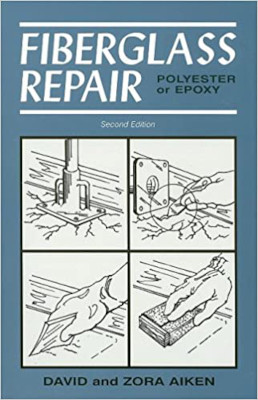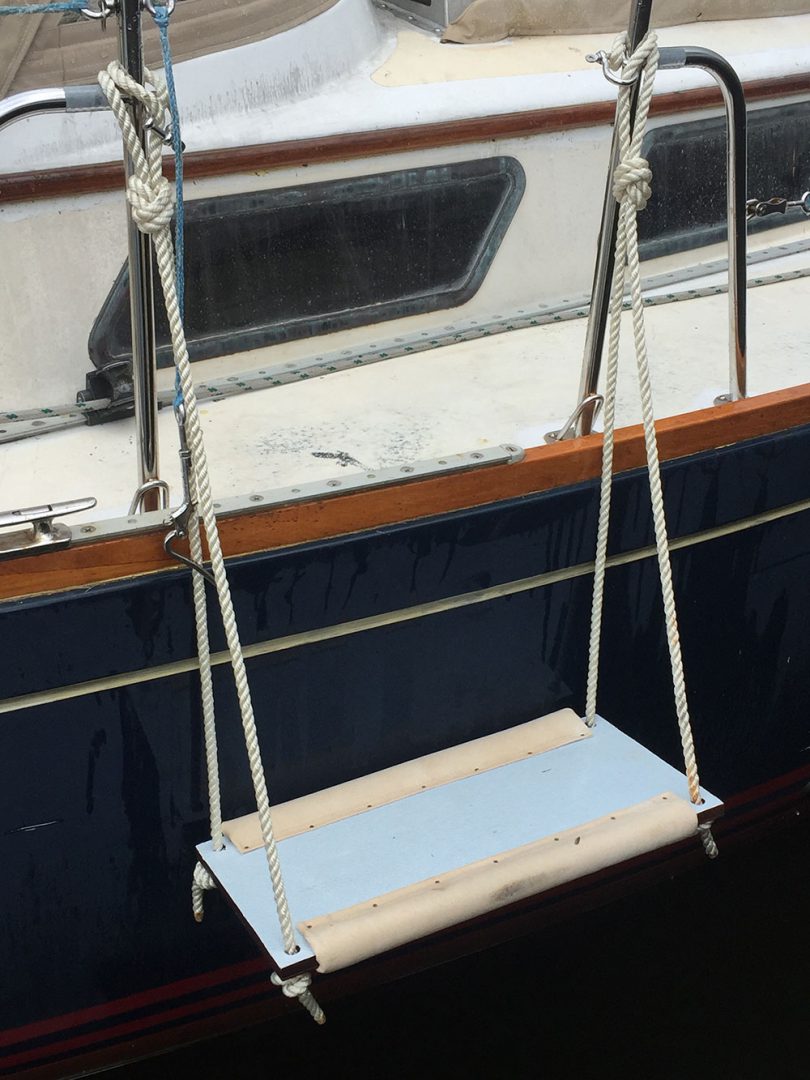
Fiberglass Repair: Polyester or Epoxy is a useful book for anyone who is considering fiberglass repair, whether novice or old pro. It’s full of valid techniques that will yield a professional job if the directions are followed exactly. There are chapters on materials, tools, cautions (safety), methods, touch-ups, holes, cores, blisters, stiffeners, and many other applications. There is a glossary, a problem-solving section, and an index. The book is very complete, and I recommend it.
However, I have a few minor suggestions that should not diminish the overall value of the book as a resource. There are a few things that might confuse the novice, for example. The authors start out discussing “woven fabric” and promptly begin to substitute the term “cloth.” I’m not sure the novice would make that transition in terminology. I would also like to see the statement that fiberglass is comprised of fiberglass and resin more clearly defined. Without a catalyst, this is going to be a very sticky mess. While they’re at it, the authors discuss the need for a catalyst briefly but do not point out that more is not better and that more may react too fast for usefulness, burst into flame, or not harden at all. Epoxy resin, if mixed with too little catalyst, will eventually harden; polyester resin with too little catalyst may never harden.
There is a good chapter on cautions that contains safety information which could perhaps even be further emphasized. The authors do not describe what happens when you over-catalyze a pot of resin or simply leave it in the mixing can in the sun too long (it will burst into flame and give off noxious gases). The book discusses smoking catalyst but does not say it will burn. Polyester resin is an oil-based product; when it flames, it is equivalent to napalm in the boat.
The book treats polyester resin in depth but does not go into as much detail about epoxy resin. For good old boaters, epoxy resin and catalyst is the preferred — although more expensive — product to use for repairs. Epoxy will adhere to most surfaces for as long as desired. Polyester has a harder time adhering to the old fiberglass you’ll face in any repair situation.
Those minor quibbles aside, this book belongs in every toolbox for the fiberglass repairer. Buy it and keep it handy.
Fiberglass Repair: Polyester or Epoxy by David and Zora Aiken (Cornell Maritime Press, 2005; 120 pages)




